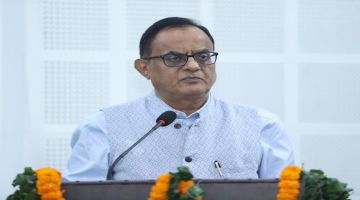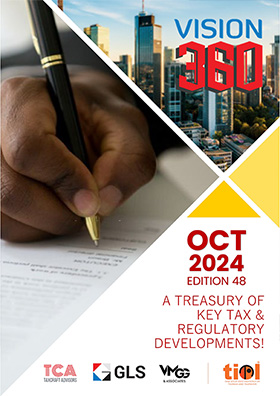Income Tax Department eyes Internet-based solution to manage income tax litigation
By TIOL News Service
NEW DELHI, MAR 17, 2013: INDIA's Income Tax Department (ITD) is belatedly searching for a developer-cum-operator for an internet-based solution to clear the cobwebs of litigation.
The growing number of pending disputes has strained the litigation process, leading to massive pile-up of uncollected tax receipts.
At any given time, thousands of appeals are pending at each of the four layers of the litigation system. ITD, for instance, reckons the annual volume of new appeals filed with The Income Tax Appellate Tribunal (ITAT) is approximately 20865. The number of new appeals filed with high courts in a given year is estimated at 5720. Similarly, the number of new cases that reach the country's Apex court is estimated at 1202 in a year.
The disputed tax raised but not realized aggregated to a whopping Rs 2083.71 billion as on 31 March 2012. Similarly, the tax receipts not under dispute but not realized (including cases pending adjudication) totaled Rs 2574.6 billion, according to the latest available official data.
With this background in view, ITD thus last month started an exercise to select an entity that would implement an internet-driven National Judicial Reference System (NJRS) as a public private partnership project. Under this payment would be made to the project Implementation Agency (IA) or the selected bidder on the actual delivery of services and not on the provisioning of the hardware/ software.
It is not yet clear when ITD would complete the tendering competition and award the contract to selected bidder.
The development and launch of NJRS may thus take two or more years.
As NJRS would be accessible to both ITD and the public, it is expected to minimize the litigation load that currently results from overlapping of cases, difficulties to bunch identical cases for expeditious verdict and filing of frivolous or avoidable appeals.
The existing manual system of filing appeals and their monitoring by ITD bristles with deficiencies.
According to ITD, the Income Tax Act, 1961 and other enactments provide a limitation period within which appeals are required to be filed at various levels. It therefore becomes important to be able to monitor the timely filing of appeals. The appeals once filed, either by the tax payer or by the department, need to be monitored on a continuous basis to ensure expeditious disposal to facilitate tax recovery efforts in the disputed cases. It is also important to be able to monitor the appeal process to avoid frivolous appeals on decided issues, to consolidate appeals by bunching similar cases, develop expertise to defend cases on specific issues, and to prioritize high tax demand cases. However, there are several challenges in achieving these objectives.
As put by the Department, “A key constraint is the absence of a consolidated database of pending litigation and the manual process of monitoring.”
It notes: “Another constraining factor is the slow movement of information on litigation matters to the judicial officers of the department. It has been the experience that information on issues decided in favor of the department is neither readily available in private sector publications, nor there is any robust mechanism to communicate such information internally to the concerned officials.”
It adds: “Yet another challenge is the reliable storage and ready retrieval of documents over long time periods considering that litigation over various stages can take several years.”
The Government has provided for a four-level adjudication mechanism under the Income Tax Act, 1961 for disputes arising out of the orders passed by various authorities under the Act: The Commissioner of Income Tax (Appeals, The Income Tax Appellate Tribunal (ITAT), The High Court and The Supreme Court of India.
The adjudication process is set in motion when a taxpayer contest an order passed by the Assessing Officer (AO), by filing an appeal with the concerned Commissioner of Income Tax (Appeals).
NJRS would have two components: 1) Appeals Repository & Management System (ARMS) : An information system and online repository of all pending appeals and relevant documents. 2) Judicial Research & Reference System (JRRS): A repository of judicial orders in decided cases as a single, indexed, searchable, cross-linked database of orders/Judgments of ITATs, Authority for Advance Ruling, High Courts & the Supreme Court. It will also have the relevant statutory enactments, circulars etc.
The ITD at present has internal applications like the ITD application, e-Filing, Central Processing Centre-Income Tax Return (CPC- ITR) CPC- TDS (tax deduction at source) etc. for managing various functions of the department.
ITD is currently overseeing development of a new system named the Income Tax Business Application (ITBA) which would integrate all these applications and also build some of the workflow for decision making. ITBA is thus expected to expedite ITD's appeals-filing mechanism.














